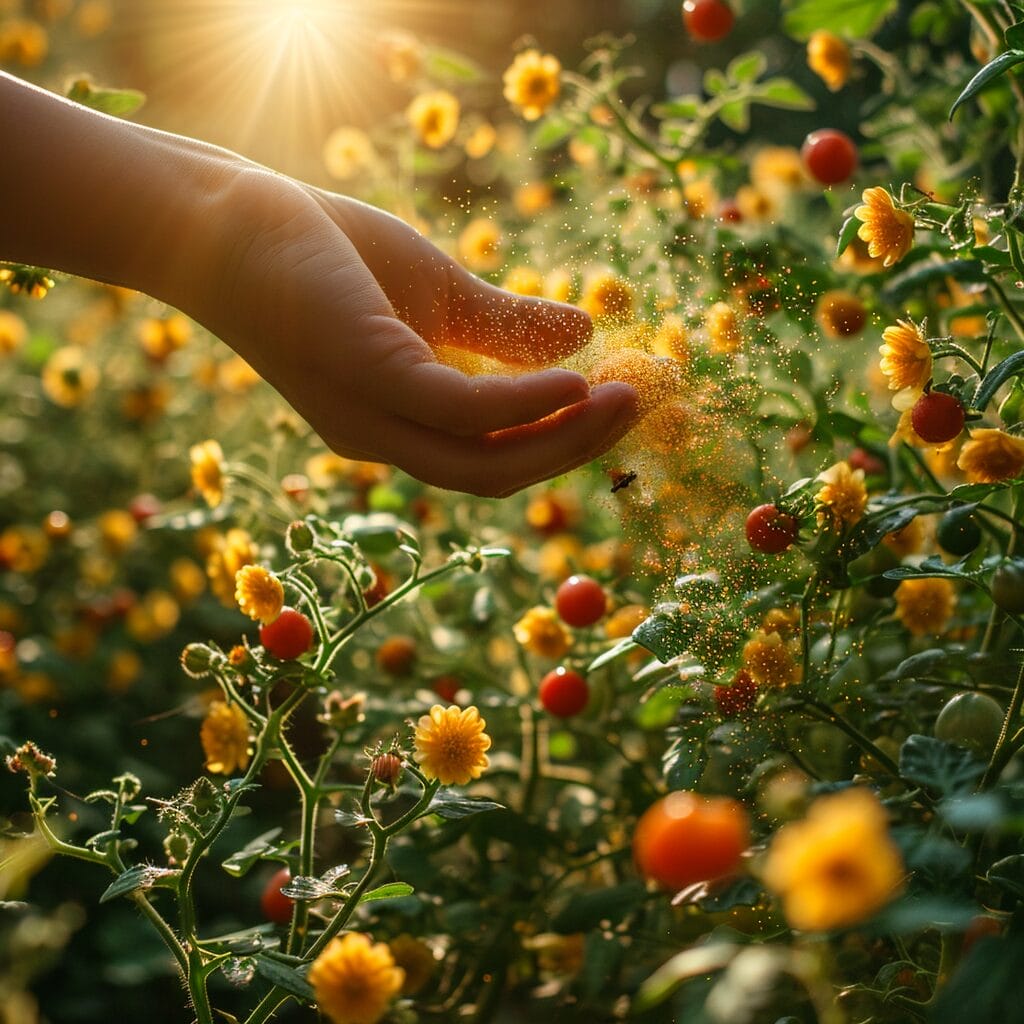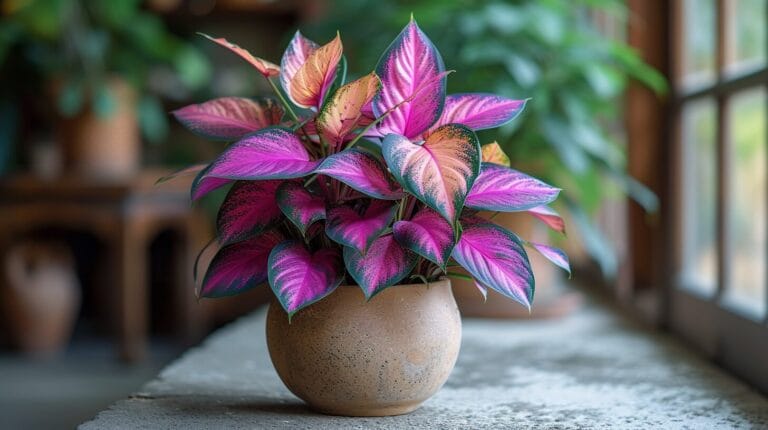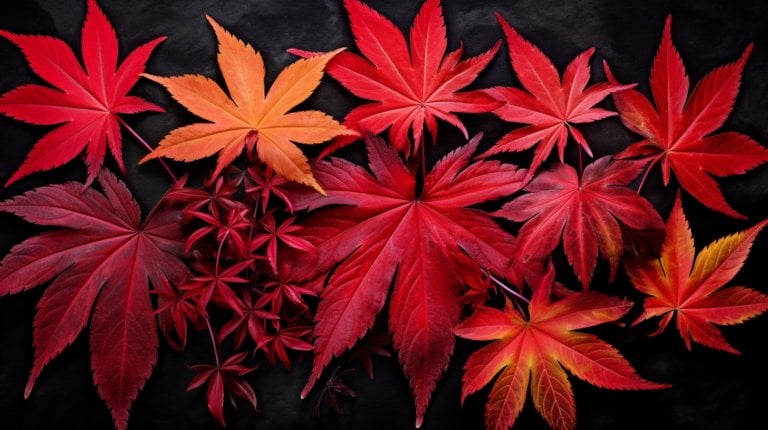Unpollinated Tomato Flower: Identify and Tackle Blossom Drop in Your Garden in 2024
As experienced growers, we regularly fluctuate between hope and disappointment when the blossoms of our tomato plants drop off early. We’ve witnessed promising crops disappear and know the importance of promptly dealing with the issue of unpollinated tomato flowers.
The reasons for blossom drop range from environmental stressors to improper care. In this article, we share insights on recognizing the subtle signs of a tomato flower’s lack of pollination and how to prevent this garden issue.
We’ll discuss the significance of temperature, watering consistency, and selecting resilient varieties. Our practical tips and advanced techniques will help ensure your tomato plants’ flowers transform into a bountiful crop.
Key Takeaways
- Tomato flowers have both male and female parts, and successful pollination occurs when pollen is transferred from the stamen to the pistil.
- Signs of unpollinated tomato flowers include wilting or yellowing petals, shriveled or darkened anthers, and the absence of developing fruit.
- Environmental stressors like high temperatures and improper watering can lead to unpollinated flowers.
- Efficient methods to manually pollinate tomato flowers include using the “Electric Toothbrush Method,” the “Cotton Swab Technique,” and gently shaking the plant to ensure pollen falls onto the pistil.
Understanding Tomato Flowers and Their Pollination Process
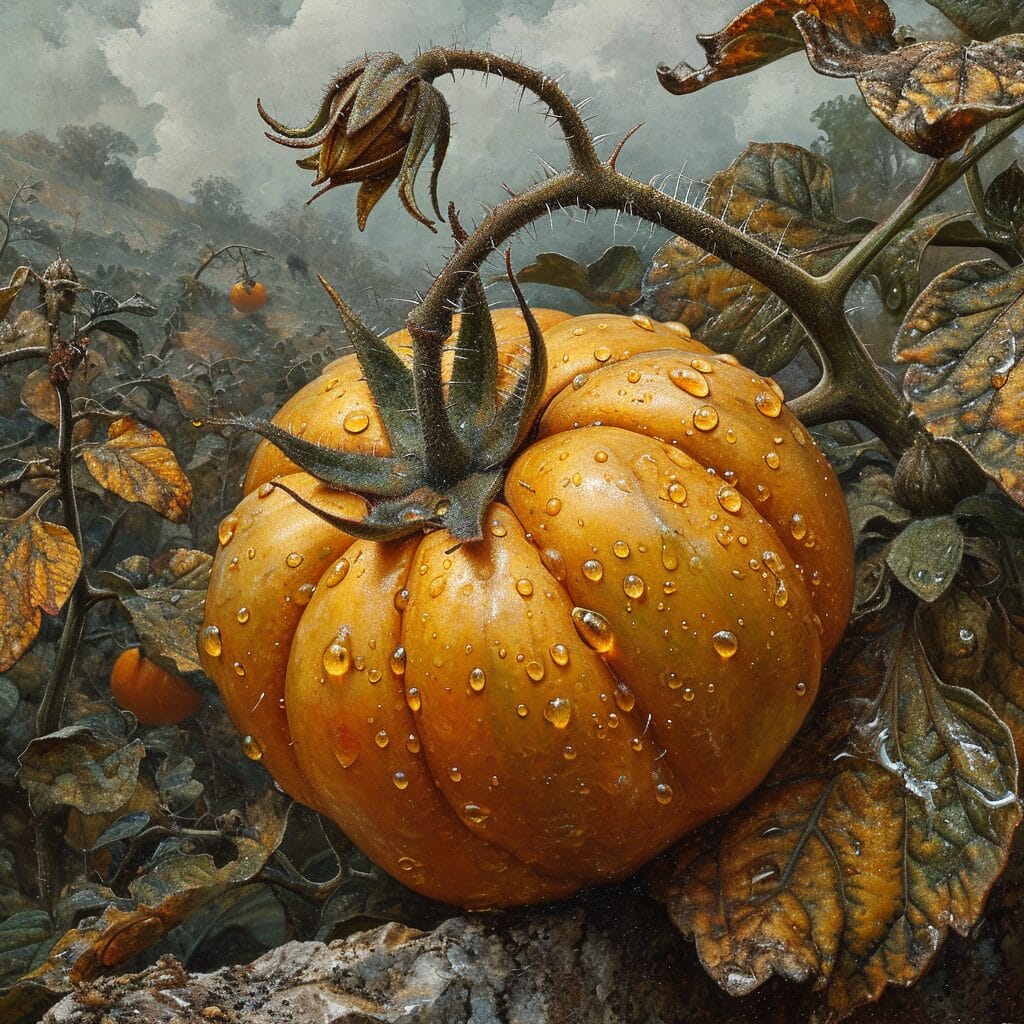
A tomato flower is a complex structure with male and female parts crucial for fruit production. The male part, the stamen, produces pollen, while the female part, the pistil, receives it. Successful pollination leads to tomato development.
Tomato plants are typically self-pollinating, but certain conditions, like high temperatures, can interfere with this process, causing blossom drop—the premature falling of flowers without fruit production.
Temperatures above 85°F during the day or over 70°F at night often lead to blossom drop. Additionally, watering is essential for successful pollination. Overwatering or underwatering can disrupt this delicate balance.
Adapting our gardening practices to create an environment resilient to nature’s challenges is key to preventing blossom drop and securing a healthy crop.
Signs to Tell if a Tomato Flower is Unpollinated
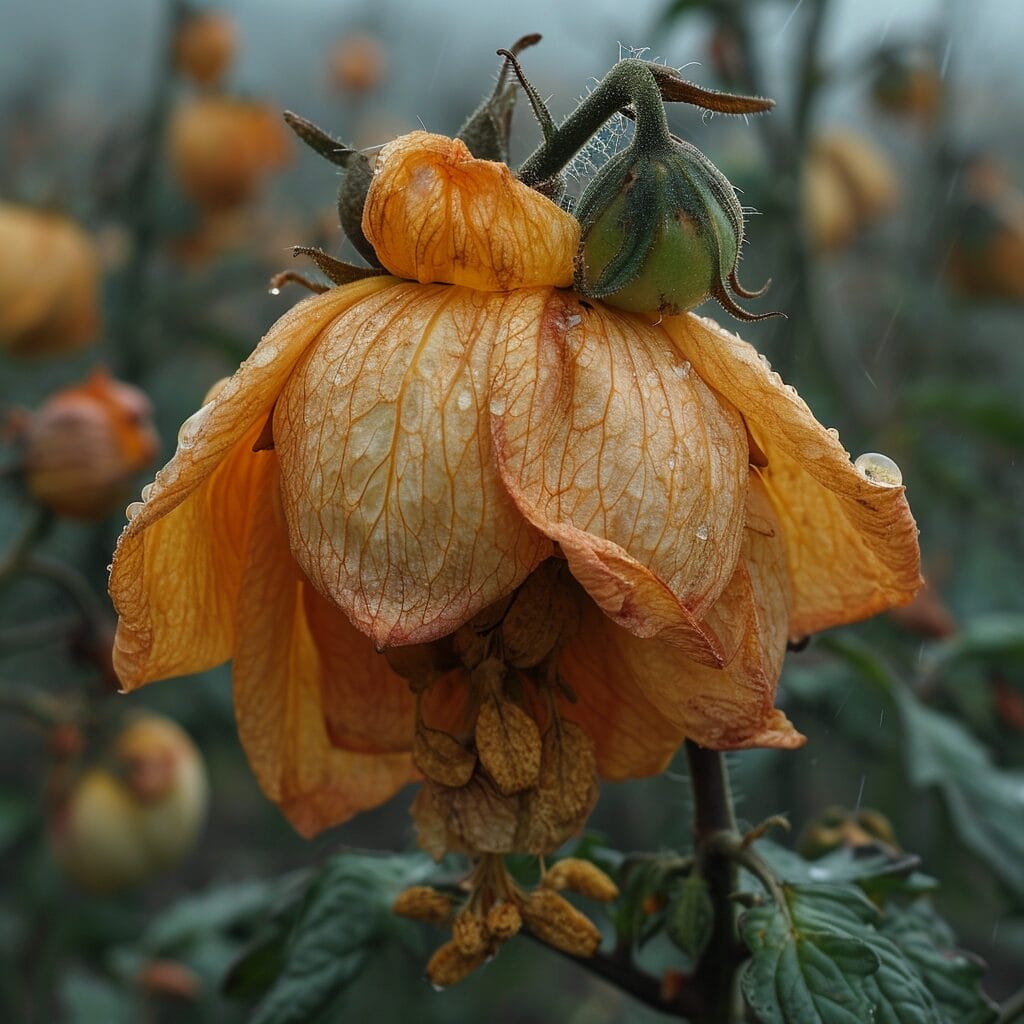
Identifying an unpollinated tomato flower is crucial to address issues preventing fruit set. Look for these signs:
- Wilting or Yellowing Petals: Indicate lack of pollination, leading to withering and eventual drop.
- Shriveled or Darkened Anthers: Suggest that pollination has not occurred.
- Absence of Developing Fruit: After a few days of flowering, a lack of small green fruit indicates unsuccessful pollination.
Monitoring these signs helps us investigate potential causes like extreme temperatures or inadequate watering and mitigate blossom drop for a fruitful harvest.
Detailed Analysis of Unpollinated Tomato Flowers
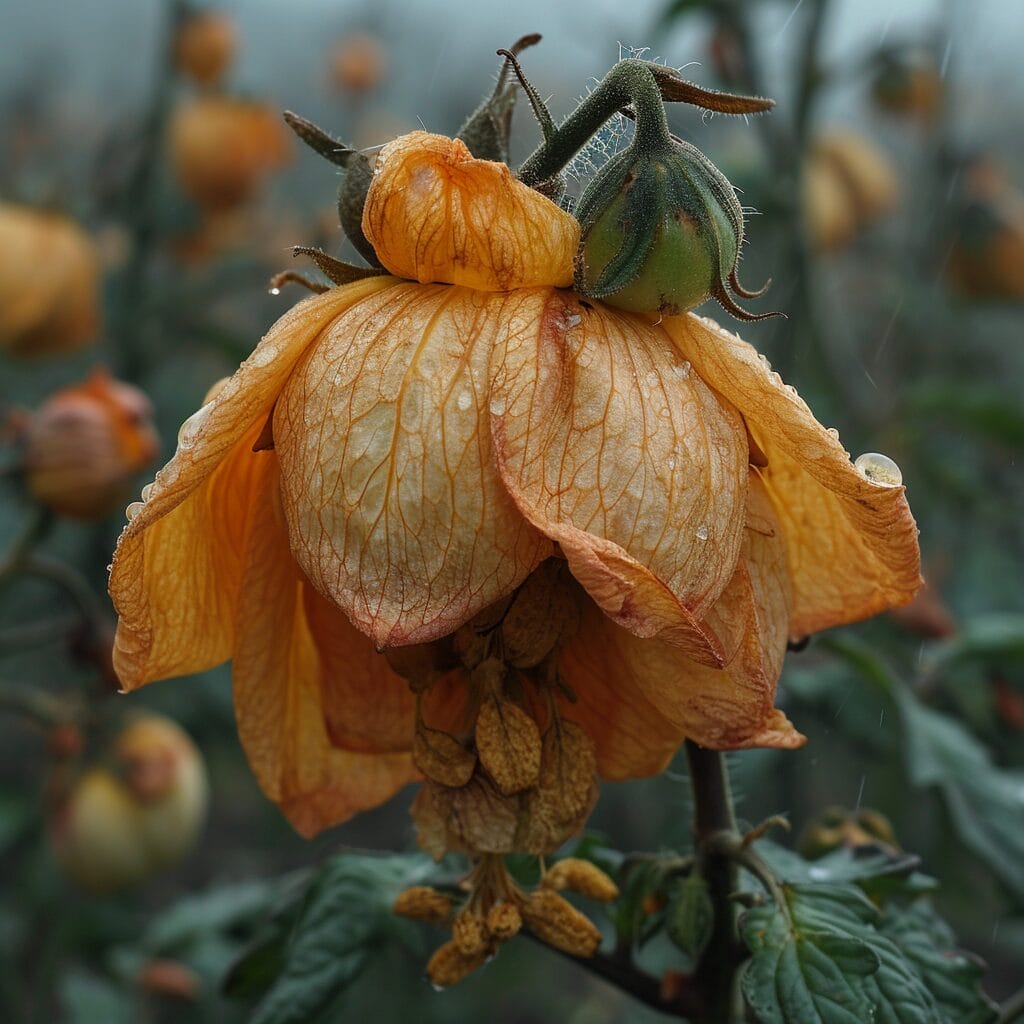
Environmental stressors that disrupt pollination can significantly impact our harvest yield. Blossom drop is often due to high temperatures or improper watering. By understanding this, we can take measures like shaking plants to mimic wind or pollinators, providing shade in heat, and selecting climate-tolerant varieties.
Efficient Methods to Pollinate Your Tomato Flowers Manually
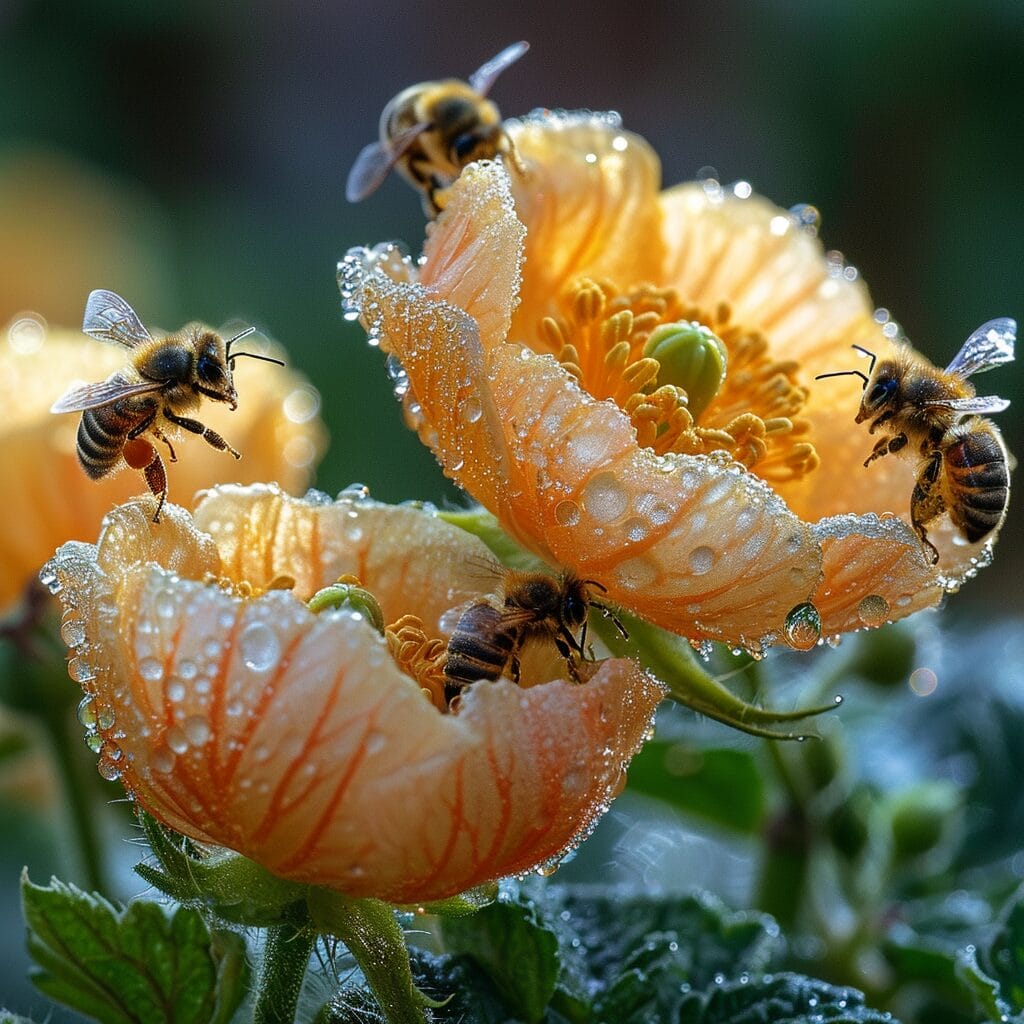
Sometimes, manual intervention is necessary for pollination. Here are some effective methods:
- The Electric Toothbrush Method: Use a vibrating device to mimic bumblebee pollination by touching the flower’s stem or back.
- The Cotton Swab Technique: Manually transfer pollen within the flower using a cotton swab.
- Shake the Plant Gently: Lightly tap the main stem or shake the plant to disperse pollen onto the pistil.
These techniques help us take control and aid in the pollination process, increasing the chances of each flower developing into a tomato.
Advanced Strategies to Combat Unpollinated Tomato Flower Scenarios
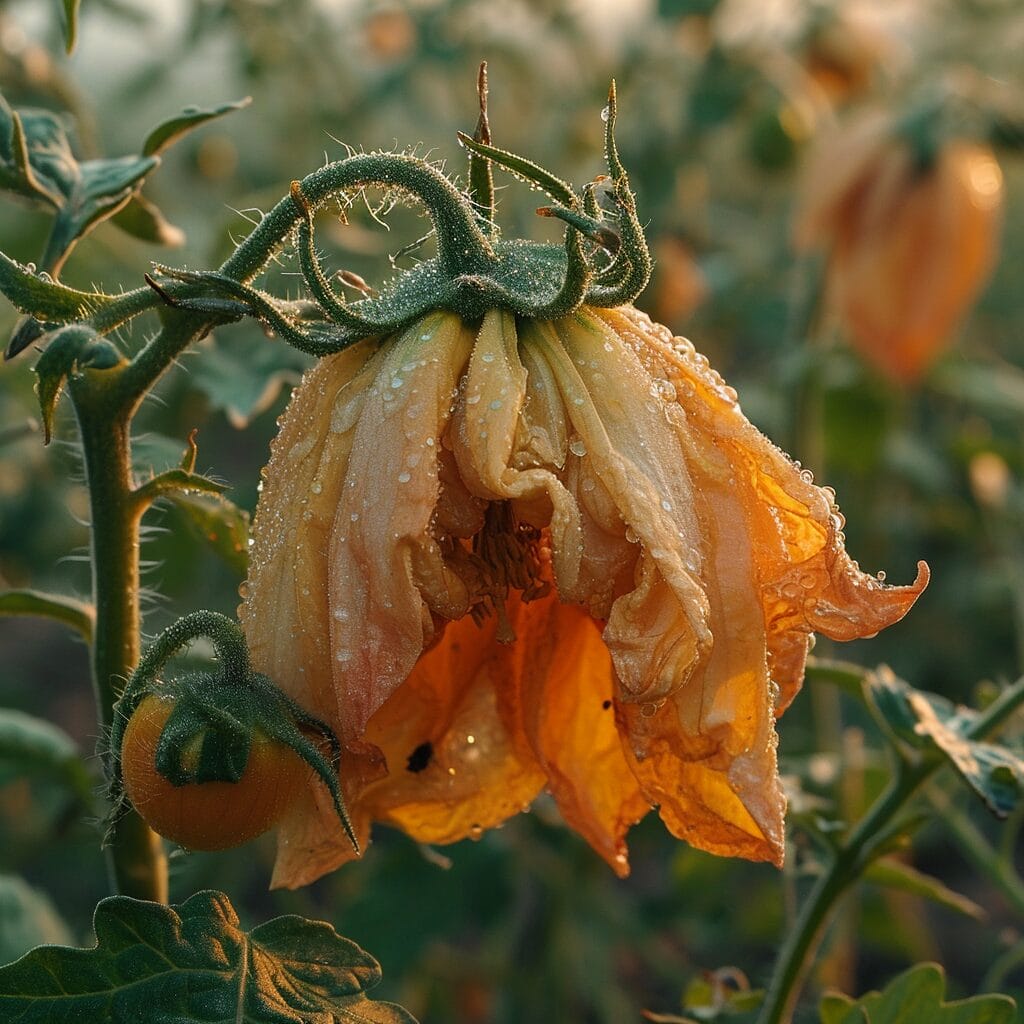
To address blossom drop, consider companion planting to attract natural pollinators and ensure efficient plant spacing for optimal air circulation. In high temperatures, provide shade or use misting techniques to manage temperature and humidity.
How Can I Prevent Unpollinated Tomato Flowers and Lawn Weeds with Purple Flowers in My Garden?
To prevent unpollinated tomato flowers, consider hand-pollinating them using a brush. As for lawn weeds with purple flowers, proper identification is key. Common purple weed identification can help you determine the best method for removing these unwanted plants from your garden.
Conclusion
By understanding the pollination process, recognizing signs of unpollinated flowers, and employing manual pollination methods, we can prevent blossom drop. Embracing these practices will help us nurture our tomato flowers into a harvest to be proud of. Let’s use our knowledge to turn our green thumbs into a bounty of homegrown tomatoes.
Frequently Asked Questions
How can a gardener tell if a tomato flower is pollinated?
A gardener can identify if a tomato flower has been pollinated by noticing a small green swelling (an ovary) at the base of the flower.
Over a few days, if fertilization is successful, this ovary will grow and become a small green tomato. It’s also important to note that tomato flowers are self-pollinating, there are no separate male and female flowers.
Is blossom drop a sign of lack of pollination in my tomato plant?
Yes, blossom drop is a common problem with tomato plants when they haven’t been pollinated. It can also occur due to other reasons such as fluctuating temperatures, high humidity or lack of sufficient water and nutrients.
It’s a sign that the gardener must take immediate action to save the existing flowers and ensure future flowers get pollinated.
How does blossom drop affect tomato growing?
Blossom drop prevents tomatoes from developing, affecting the overall yield of your tomato plants. The plant flowers, but due to lack of pollination or other stress factors, the flowers fall off instead of setting fruit. This can significantly reduce the number of tomatoes each plant produces during the growing season.
Which tomato varieties are less likely to suffer from blossom drop?
Smaller tomato varieties, such as cherry tomatoes, are less likely to suffer from blossom drop as they generally have stronger tolerance to stress factors. Larger, heirloom varieties could require more care and might be more sensitive to extreme conditions, hence increasing the chances of blossom drop.
Do tomatoes need to be pollinated to ripen?
Yes, tomatoes need to be pollinated to form and ripen. After successful pollination and fertilization, the tomato flower’s ovary develops into a tomato fruit, which ripens over time. If a flower doesn’t get pollinated, it will eventually drop off the plant without setting fruit.

